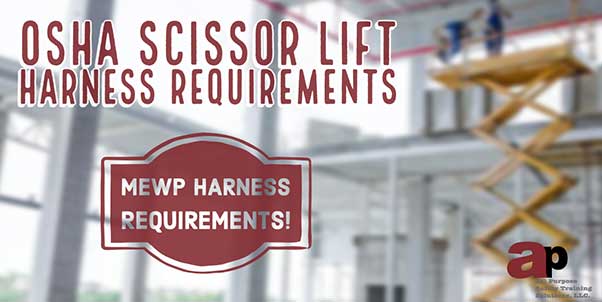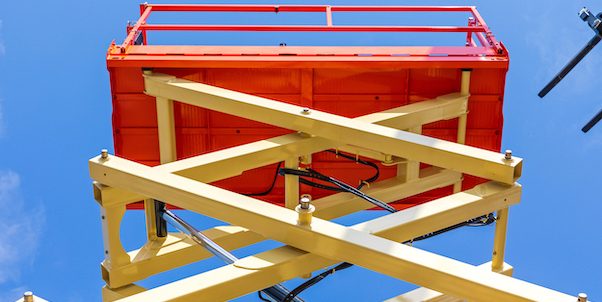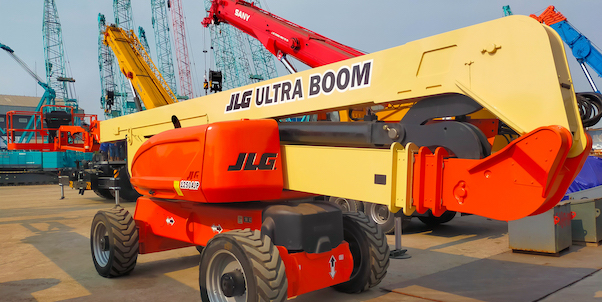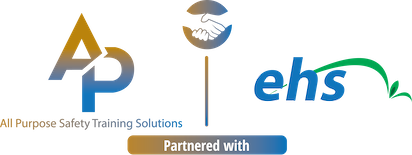
Understanding OSHA scissor lift harness regulations is crucial for anyone working at heights. Mobile Elevating Work Platforms (MEWPs) are widely used across construction and maintenance projects, but misuse or lack of training can lead to serious injury—or worse.
MEWPs provide safe access to elevated areas, but according to OSHA, only authorized and trained personnel should operate them. When employers fail to enforce harness requirements, they put both operators and bystanders at risk.
MEWP Harness Requirements
Per OSHA 1926.453(b)(2)(v), operators of aerial platforms and boom lifts must be tied off using a personal fall arrest system. This requirement applies to equipment regulated by ANSI A92.2 (1969).
Need Aerial Lift Training? Contact AP Crane Training to get started.
Industries That Use MEWPs
MEWPs are used across many sectors, including:
- Arboriculture
- Construction
- Forestry
- Electrical utilities
- Film & television production
- Port operations
- Advertising & signage
- Stock picking & warehousing
- Telecommunications
- Railway maintenance
OSHA Scissor Lift Requirements

While MEWPs follow aerial lift regulations, scissor lifts are covered under OSHA’s scaffold standards (29 CFR 1926.451). Though OSHA does not mandate harnesses for scissor lifts, fall protection must be provided by either:
- Guardrail systems
- Tethering (harness + lanyard)
- Personal fall restraint or arrest systems
Fall Protection Options
Restraint System
A restraint system prevents a worker from reaching the edge of the platform. This may include a body belt or harness, and must be designed to stop any forward motion that could result in a fall.
Positioning Device System
A positioning system allows a worker to be supported on a vertical surface with both hands free. It’s commonly used in pole work and is regulated under OSHA 1926.500. These systems may allow a limited fall (≤ 2 ft).
Fall Arrest System
These systems are used in elevated construction work and must meet OSHA 1926.502(d). Body belts are prohibited for fall arrest—full-body harnesses are required.
Learn more about Aerial Lift Fall Protection
Common Boom Lift Accidents

Boom lift accidents are often more severe than those involving scissor lifts due to their height and reach. The most common MEWP-related incidents include:
- Electrocutions from overhead power lines
- Falls from aerial lifts
- Lift tip-overs
- Being caught between the lift and fixed objects
- Struck-by incidents involving falling objects
- Mechanical failure
- Improper operation or lack of training
- Failure to assess jobsite hazards
Stay current with training to prevent workplace injuries and fatalities. Training, supervision, and hazard assessments must be prioritized at every job site.
